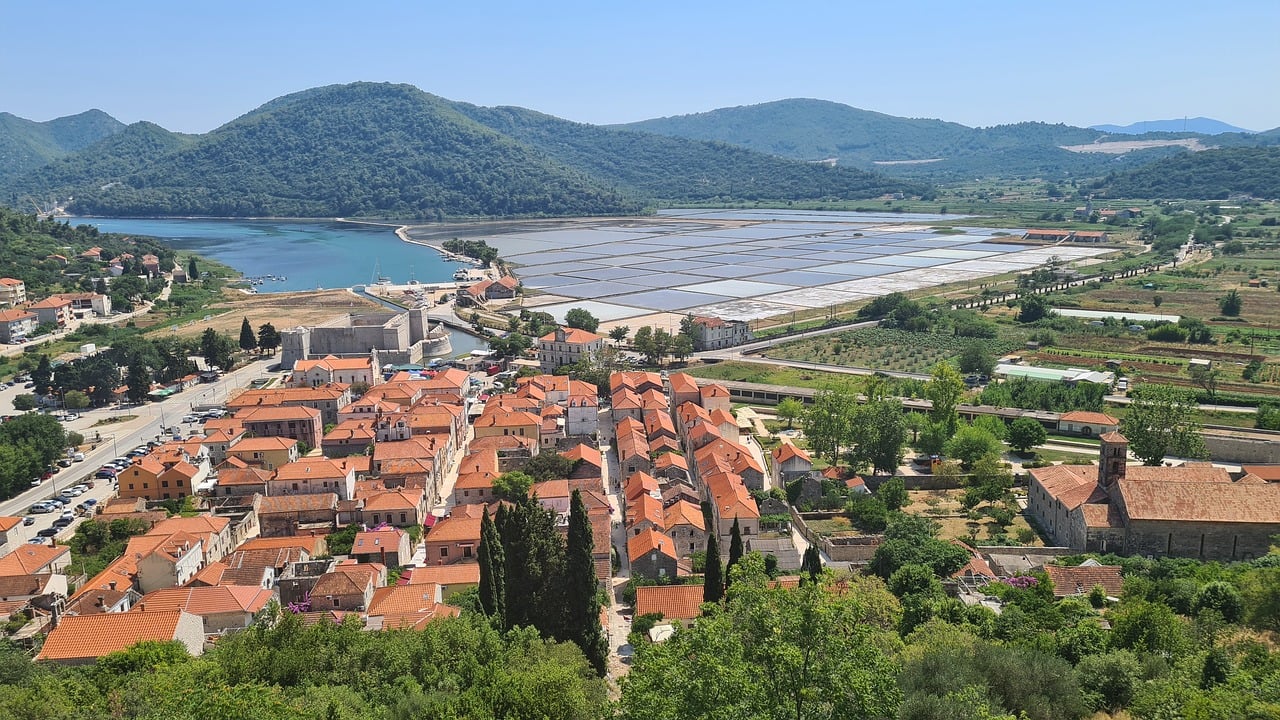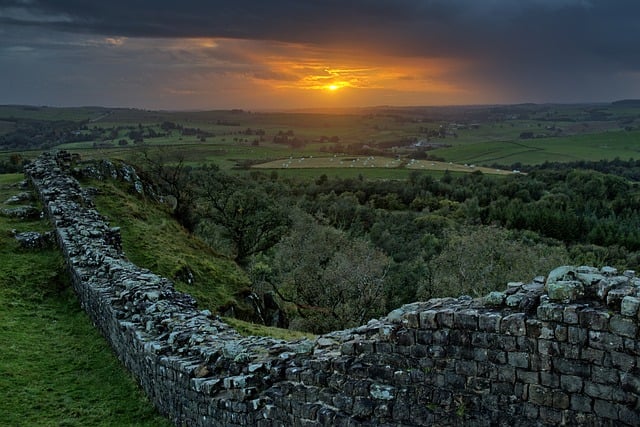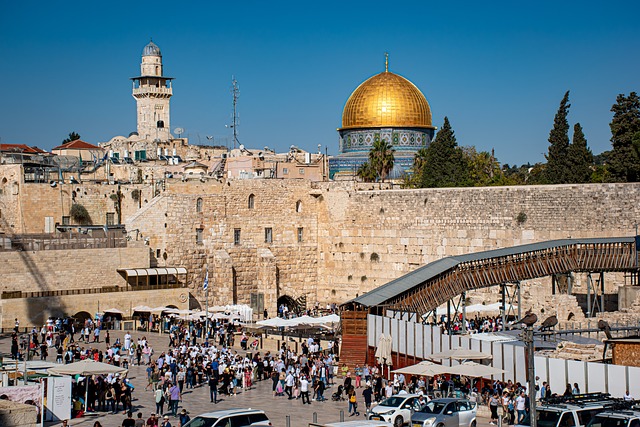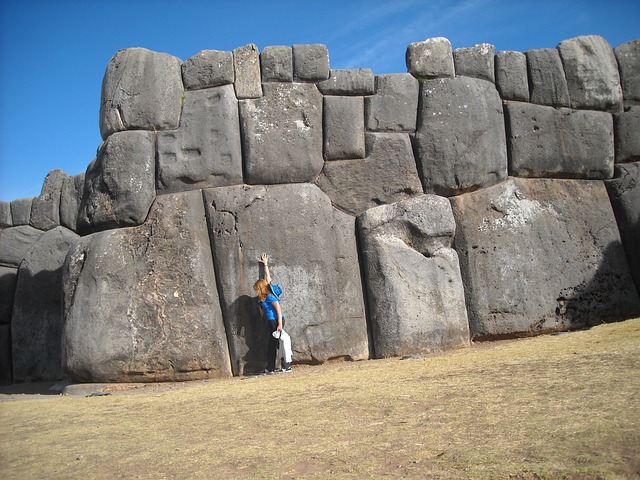Walls have been built for a very long time to mark boundaries and keep people or enemies out. In more recent years, walls have also been made as memorials and works of art. But walls take over the scenery wherever they are, no matter what they are used for.
Top 10 Famous Walls in The World
1. Walls of Troy
The classic poem The Iliad by Homer tells the story of Troy, a city in what is now northwest Turkey. We know this is where the Trojan War happened because the Iliad says so. There are many levels of ruins at the historical site of Troy.
The cover of Troy VIIa was most likely the Troy from Homer’s stories. It was built between the middle and late 13th century BC. Some of the famous walls of Troy can still be seen. Today, a lot of people go to Troy every year. The tourist sees a very commercialized site with shops, a museum, and a big wooden horse built as a playground for kids.
2. Wall of Ston
The Walls of Ston are a group of stone walls that were built to protect the peninsula Peljesac in southern Croatia. A wall was built between the towns of Ston and Mali Ston at the peninsula’s narrowest point, right before it meets the mainland. The wall between these two small towns is 5.5 kilometers (3.5 miles) long and has 40 towers and 5 castles. It was finished in the 1400s.

It was supposed to protect the valuable salt pans that made Dubrovnik rich and serve as a second line of defense for the city. The only wall in Europe that is longer is Hadrian’s Wall, which runs between Scotland and England.
3. Berlin Wall
The Berlin Wall was first built in 1961. East Germany did this in a last-ditch effort to stop East Berliners from running away from the Soviet-run East German state into the West of the city, which was held by the US, UK, and France at the time.

Around 5,000 people tried to escape by going around the Wall while it was up. The number of people who died in these attempts ranges from 98 to 200. As the Iron Curtain began to fall apart in 1989, hundreds of people started pulling it down by hand. Today, you can see pieces of Berlin’s famous wall on Bernauer Strasse and in front of the Neiderkirchnerstrasse, which is home to the Berlin Parliament and the old Prussian Parliament.
4. Hadrian’s Wall
People in Britain were afraid of the tribes in Scotland, so the Romans built Hadrian’s Wall to keep them safe. Around 117 km (73 miles) long, it goes from the Irish Sea to the North Sea in the north of England. After the Roman Emperor Hadrian visited in 122 AD, work on the building began and was mostly finished in six years.

About 9,000 soldiers, both foot troops and horse soldiers, guarded the wall. Today, you can only see parts of this famous wall, but it is still one of the most popular places to visit in England. For the whole length of the wall, from Wallsend to Bowness-on-Solway, there is a public path.
5. Vietnam Veterans Memorial Wall
In Washington, D.C., there is a national war memorial called the Vietnam Veterans Memorial. The Vietnam Memorial is often called the most moving memorial in the city. It honors those who died or went missing and is meant to be more than just a political statement to remember the soldiers who gave the final sacrifice.
A memorial wall created by Maya Lin stands at the center of the park. It is made up of two black granite walls that are engraved with the names of 58,256 soldiers.
6. Great Zimbabwe Walls
The Great Zimbabwe is a group of stone ruins that cover a large area in present-day Zimbabwe. The country is named after the ruins. There are many small ruins across the country called Zimbabwees. The word “Great” makes this one stand out. The building began in the 11th century and went on for more than 300 years. It was done by native Bantu people.
It is thought that as many as 18,000 people lived in Great Zimbabwe at its peak. The Great Enclosure, which is its most impressive building, has walls that are up to 11 meters (36 ft) high and stretch about 250 meters (820 ft) long. This makes it the biggest ancient structure south of the Sahara Desert.
7. Walls of Babylon
Antipater of Sidon was the first person to write about the Walls of Babylon, an old city-state in Mesopotamia. “I have gazed on the walls of impregnable Babylon along which chariots may race,” the first line of his poem says. Another old list of the Seven Wonders had the Ishtar Gate on it. It was built around 575 BC and was a part of the famous Walls of Babylon.
Blue glazed tiles with rows of bas-relief dragons and aurochs were used to build both the gate and the walls. In 1983, Saddam Hussein began both fixing up the old wrecks and building new ones on top of them. If going to Iraq sounds too dangerous, the Pergamon Museum in Berlin has a replica of the Ishtar Gate and walls made in part from things that were found in Babylon.
8. Great Wall of China
In the 5th century BC, the Great Wall of China was built, rebuilt, and kept up until the 16th century. Its purpose was to keep nomads from the north from attacking the northern borders of the Chinese Empire. There have been many walls built that were called the Great Wall. The wall that the first Emperor of China, Qin Shi Huang, built between 220 BC and 206 BC is one of the most well-known, but not much of it still stands. Most of the walls that are still there were built during the Ming Dynasty (1368–1644).

In recent years, the largest archaeological study to date has found that the Great Wall, including all of its branches, is 8,851.8 kilometers long. The Great Wall can be in great shape or in terrible shape. Some parts of the Great Wall near tourist spots have been preserved and even heavily renovated. However, the wall is in bad shape in many places because of erosion and vandalism.
9. Western Wall
The Western Wall, which is also known as the Wailing Wall, is a well-known Jewish religious spot in Jerusalem’s Old City. Herod the Great built just over half of the wall, which is below street level and includes 17 courses. It was built near the end of the Second Temple period, around 19 BC. From the 7th century onward, the last few layers were added.

The Western Wall is holy to Jews because it is the only piece of the Holy Temple that still stands. Jews visit it every year because it is the closest site that they are allowed to be to the holy place in Judaism, which is the Foundation Stone on the Temple Mount.
10. Sacsayhuaman
There is an Inca building with walls called Sacsayhuamán that is high above the Peruvian city of Cusco. It was built in the shape of a puma, which was the animal that represented the Inca family. This was the main square. The river Tullumayo ran through the middle, and the hill of Sacsayhuamán stood at the top. The three horizontal walls are built on different levels and are made of huge limestones. Some people think that the curved walls are the teeth on the puma’s head.

The largest rocks are used for the first or lower levels. The biggest one is 28 feet tall (8.5 meters) and weighs about 140 metric tons. There are too many stones in the wall for a single sheet of paper to fit between them. It is thought that the accuracy of the shapes, the variety of how they fit together, and the way the walls lean inward helped the ruins survive Cuzco’s deadly earthquakes.



